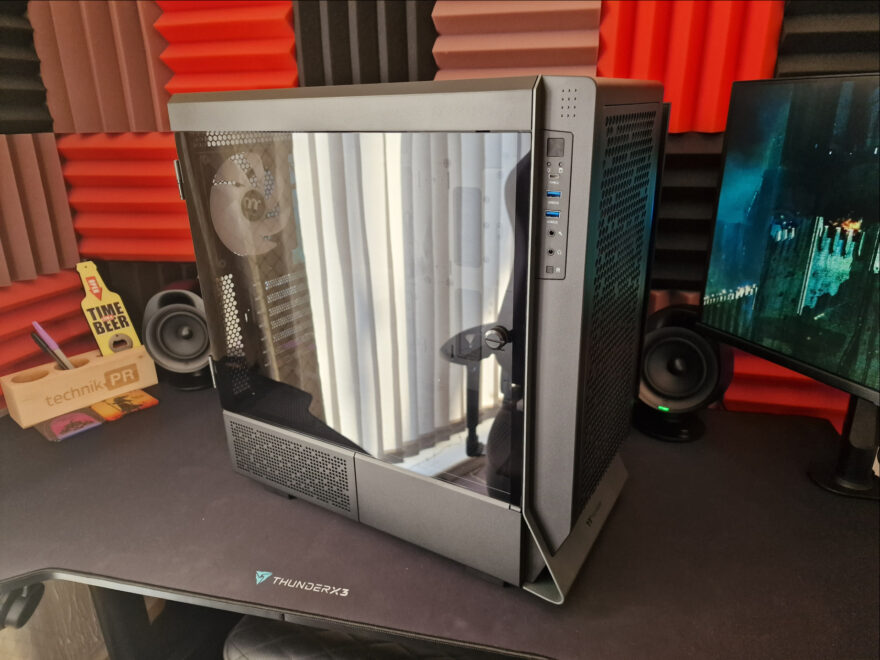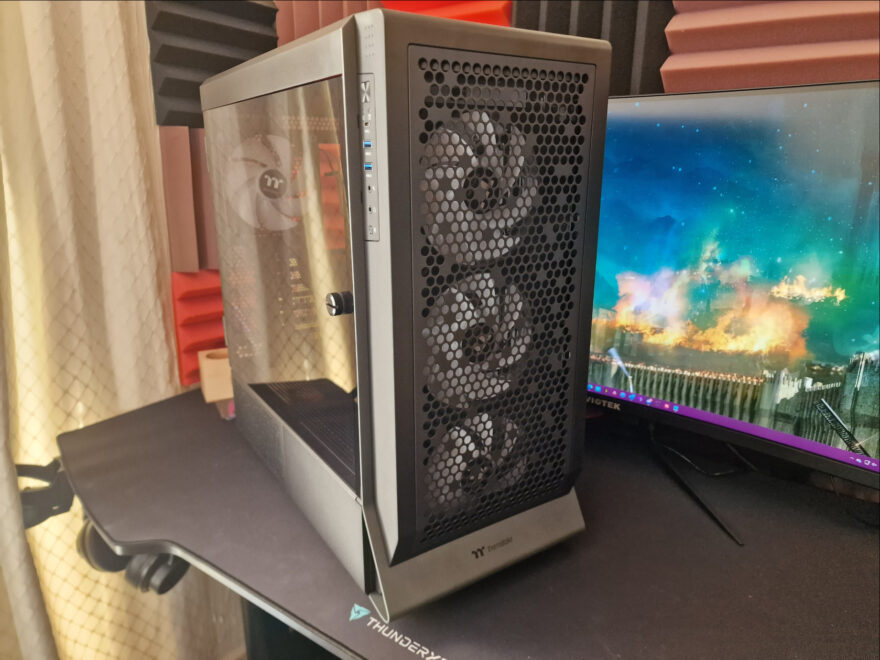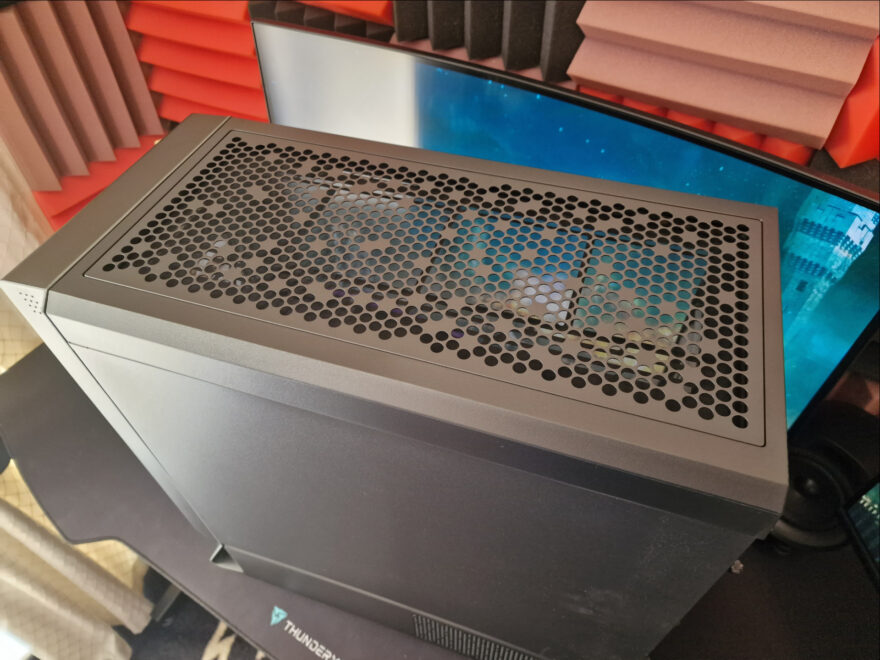Thermaltake Ceres 500 TG ARGB Case Review
Peter Donnell / 2 years ago
A Closer Look – Exterior
This is one stunning-looking case, and I love that it’s both unique to look at and yet it’s unmistakably a Thermaltake design, a sort of modern edge brutalism aesthetic that isn’t subtle but still looks really cool. There’s a huge clear window on the left side, a big door knob to allow you to easily open it up.

There’s plenty going on on this side too, with an external mesh section near the PSU, not seen that before, but actually, it looks pretty cool.

There’s also the front I/O panel on the upper left side of the front panel. Not many brands put the I/O here, but it’s something Thermaltake has done in the past, and I like how it looks, plus it’s well-equipped.

The right-side panel is robust and locked in place with thumbscrews. Actually calling this panel robust is an understatement for the whole case, it’s all very robust. It’s pretty heavy too, but that’s often the case with the more expensive Thermaltake cases.

The front panel of the Ceres 500 is really something to behold though, with that huge perforation front cover providing huge amounts of airflow. However, I love that some are randomly filled in, giving it a much more pleasing aesthetic.

The top panel is much the same but with the pattern laid out diagonally. In fact, the case has somewhat conflicting designs on every panel, but somehow, that actually works to its benefit. Of course, style is subjective, but it’s hard to deny it’s an interesting-looking case; regardless of if you love it or hate it.

Around the back, there’s a load more ventilation again, and space for a rear-mounted fan with elongated screw mounts so you can adjust the height.

The expansion slots are all metal and all reusable too, not that I was expecting cheaper snap-off covers on a case that costs this much. The whole expansion slot section is removable too, allowing you to rotate it 90 degrees for vertical GPU mounting.

That PSU mount is at the bottom, obviously, and as is often the case with Thermaltake it uses a removable rear bracket to install it.




















